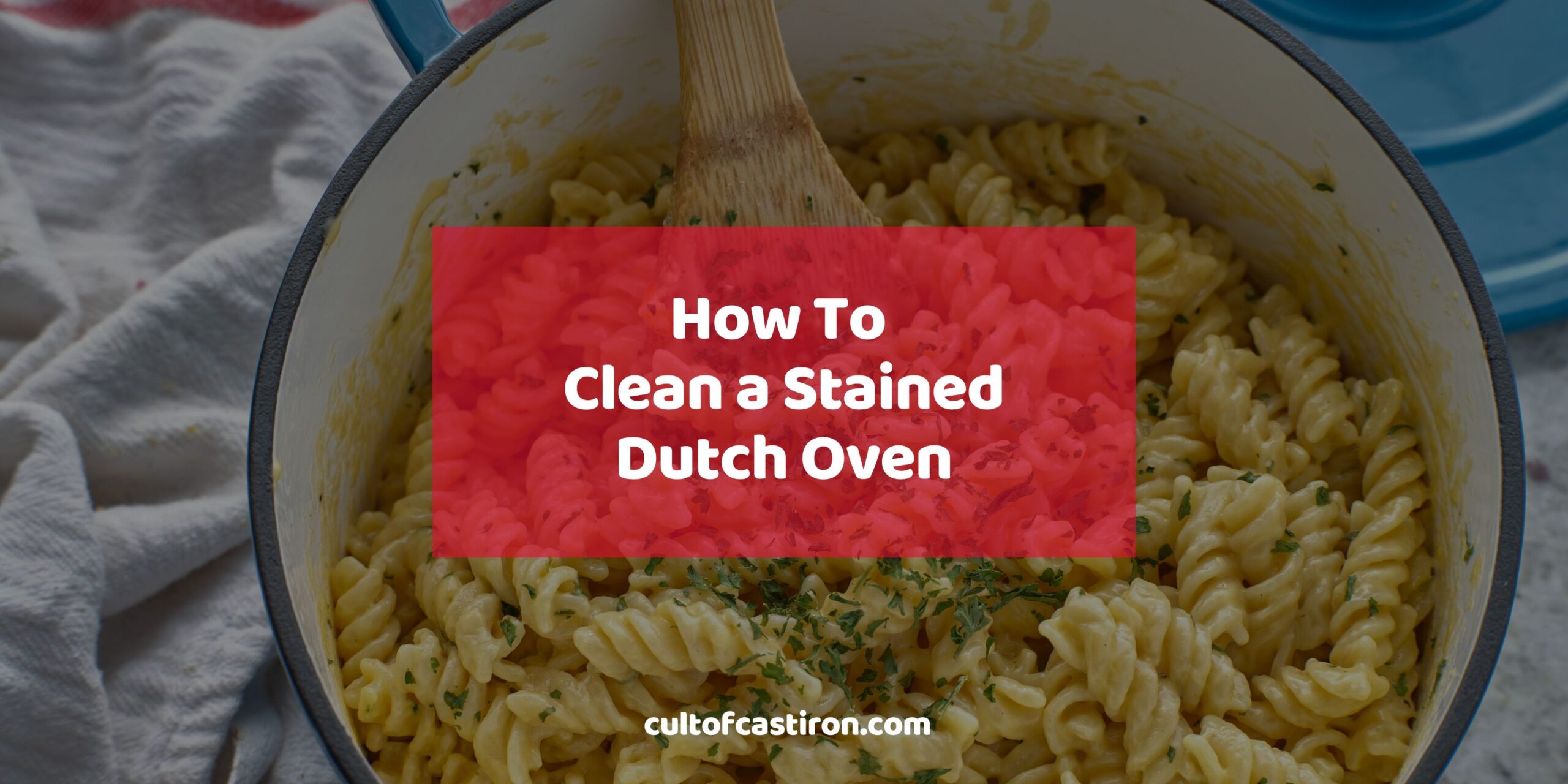For many home cooks, Dutch ovens are more than just a cooking vessel. They often serve as a centerpiece in their kitchen, and even displayed on kitchen counters. Heck, my brother told me to display mine on top of my refrigerator – a suggestion that I don’t agree with for my fridge’s sake.
Be that as it may, some people like to make sure that their Dutch oven looks pristine when displayed. But as most of you know by now, you can’t really get a totally spotless Dutch oven. You cook on it once, and boom – stains.
Now, I have a lot to say about cleaning stains off of Dutch ovens. But, for the benefit of those people who want to do so, I put the “quick step-by-step guide” section next to spare them from scrolling.
So, without further ado…
How to Remove Stubborn Dutch Oven Stains: 3 Methods
There are several methods you can use to remove stubborn stains from your Dutch oven, and fortunately, they can be done with common household cleaning items.
1. The Baking Soda Method
This method relies on the mild abrasiveness of baking soda will lift stains without causing any harm to the enamel. Since this method uses abrasion as the primary method of cleaning, you don’t have to let this one sit for hours – just keep scrubbing away!
- Create a paste with baking soda. Mix water and baking soda until it has a pasty consistency. A two-to-one ratio of baking soda to water should do the trick, though I’m confident that you can just eyeball this one without any measurements.
- Rub paste gently over stains. With an old toothbrush, rub the paste gently over stains in a circular manner. Repeat until the stains have been lifted off.
- Give the Dutch oven a good rinse. Once the stains have been removed, give the Dutch oven a good rinse. Make sure to clean it with soap and water to get any residues off the surface.
2. The Bleach Method
Bleach has been used to remove stains for centuries now. This works on most surfaces – including enamel!
- Create a bleach solution. Dilute 3 tablespoons of bleach with 4 cups of water. Don’t mix in any acids like vinegar or Bar Keeper’s Friend as it will create ammonia fumes
- Soak for 4 hours or overnight. Bleach begins working immediately on contact, but needs some time to do its job.
- Drain the bleach solution. After waiting, remove the bleach solution from the Dutch oven. Lightly scrub left over stains if needed.
- Wash the Dutch oven with soap. This is to remove any leftover bleach from the surface.
3. The Hydrogen Peroxide Method
Hydrogen peroxide is a potent cleaning agent, and this method also does the job quickly without having to resort to too much elbow grease.
- Create a hydrogen peroxide and baking soda solution. Pour hydrogen peroxide into your cookware, covering the bottom by at least ½ inch, then toss a quarter cup of baking soda.
- Heat the Dutch oven until the solution bubbles up. Let it simmer for 10 minutes – this should lift those stains away.
- Drain, and rinse. After draining, make sure to wash the Dutch oven with soap and water to get rid of any residues.
Also read: Here’s Why Your Enameled Cast Iron is Cracking (And What You Should Do About It)
Why Having A Stained Dutch Oven is Okay: A Short Op-ed
After I’ve outlined the steps on how to clean your stained Dutch oven, I will now implore you not to. Here are a few reasons why I think leaving stains on your Dutch oven untouched is the way to go.
Discoloration does not affect performance. The performance of your Dutch oven remains unchanged whether it’s gleaming white or speckled with stains, so why bother?
Patina adds to the aesthetic appeal (and maybe even taste). I get it, aesthetics are subjective. But to me, stained Dutch ovens exudes personality. Also, I don’t know about you, but being served something from a well-stained Dutch oven improves the taste of the food for me. Psychologically, I think its because I associate stained Dutch ovens with experience, and with more cooking experience comes better taste.
Lastly, I leave you with this. Don’t let your items own you. A well used Dutch oven WILL be covered in stains inside and out. There is just no way around it. If you really want to display a pristine Dutch oven, then buy one, display it, but don’t use it. Now I ask you: where is the wisdom in that?

Miguel is a cast iron enthusiast from Cavite, Philippines. He works in the digital marketing field as a content marketing strategist. On the side, he manages a small online bookstore and tends to his plants.

